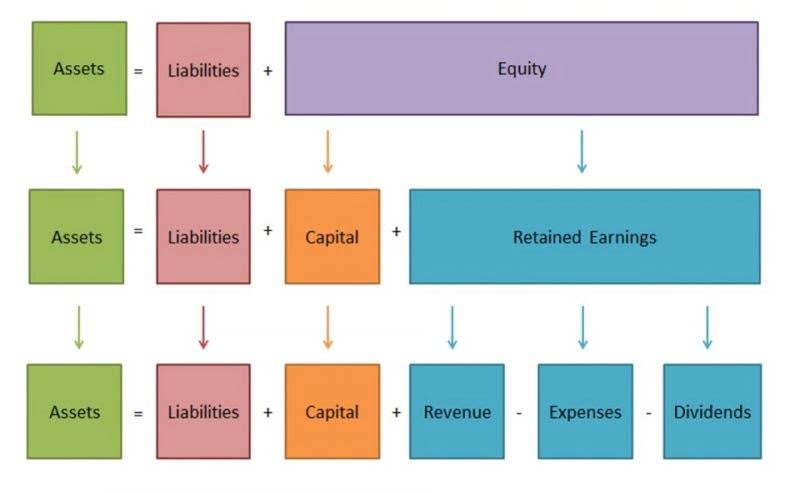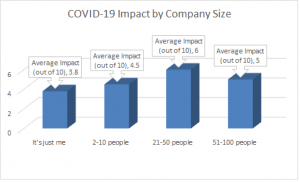Indirect costs are expenses that apply to multiple activities as part of daily operations. These overhead or operating costs include fixed and variable expenses, such as rent and utilities. It’s challenging to allocate indirect costs to a specific product, service, or project. However, you can use a cost allocation process with accounting software or an enterprise resource system to distribute expenses. By tracking direct costs separately from indirect costs, businesses can monitor production expenses and identify areas for cost reduction.
- To get an idea of how your overall expenses compare to your overall sales during a period, you find your overhead rate.
- Moreover, no matter how much the factory produces, the rent doesn’t change, making it a fixed cost.
- One of the significant advantages of SRM software is its ability to facilitate bidding and supplier selection through a structured and transparent process.
- Adopting cloud-based ERP solutions like Deskera ERP enables businesses to track direct costs in real time, automate procurement processes, and gain financial insights.
Direct cost vs. indirect cost for taxes
This would allow business owners to spot trends and address cost issues as they arise. You need to keep track of your indirect costs because if they are increasing, you may need to price your goods differently—or quickly improve your efficiency in order to achieve a higher gross margin. These are defined in the same way as described for the other fields, including a grant. These are the expenses that are not identifiable with any one particular cost object of an entity. For example, if a machine is taken on rent for manufacturing multiple products, the expense cannot be segmented for each product separately.
Indirect vs direct costs
Businesses dependent on global suppliers may face increased transportation costs, affecting overall production expenses. The cost of raw materials can vary due to market conditions, supply chain disruptions, or geopolitical factors. Sudden price increases can erode profit margins, making it difficult for businesses to maintain stable production costs. Since direct costs are directly linked to production, they form the foundation for setting competitive and profitable prices. Businesses use direct costs to calculate the Cost of Goods Sold (COGS), ensuring that prices cover expenses while maintaining a healthy profit margin.
Activity-based cost allocation
Adopting cloud-based ERP solutions like Deskera ERP enables businesses to track direct costs in real time, automate procurement processes, and gain financial insights. Deskera ERP helps streamline cost management, ensuring businesses can make informed decisions and improve profitability. Direct costs are expenses that can be directly traced to the production of a specific product or service. These costs are crucial for financial planning, pricing, and profitability analysis. Let’s say you make rent and utility payments to keep your business going.
The legal challenges are ongoing, and the research community is closely monitoring the situation to understand the potential impacts on future funding and research capabilities. You must subtract your COGS from your business’s gross receipts to figure out your gross profit on your business tax return. When you classify an expense in your COGS, you can’t deduct it as a business expense. To get an idea of how your overall expenses compare to your overall sales during a period, you find your overhead rate. For the past 52 years, Harold Averkamp (CPA, MBA) hasworked as an accounting supervisor, manager, consultant, university instructor, and innovator in teaching accounting online.
- Since direct costs are directly linked to production, they form the foundation for setting competitive and profitable prices.
- To cut indirect costs, business owners need to study their profit and loss statement (income statement), line by line, and determine which costs need to be reduced.
- Indirect cost is any cost that the firms cannot count for a particular business activity, project, service, or objective.
- Direct costs are expenses that can be directly traced to the production of goods or services.
Enhances Profitability Analysis
Each method has its own pros and cons, for example in terms of impact on pricing, financial reporting and taxation. To cut indirect costs, business owners need to study their profit and loss statement (income statement), line by line, and determine which costs need to be reduced. This can be achieved through negotiating better rates with suppliers and service providers, for example. It could also be achieved by identifying inefficiencies and reducing them through technology and automation.
Consider how valuable the expense is to operating your business and come up with ways to slash the price. Knowing how to reduce expenses in business is essential if you need to increase your profits. Examples of direct expenses include manufacturing materials, direct materials, and direct labor. By locking in costs now, you’ll reduce exposure to price volatility and improve the predictability of your direct costs.
In financial accounting and taxes, attributing expenses to the correct category isn’t just a tip or guideline; it’s a requirement when filing IRS forms, requesting grant funds, or reporting to investors. The difference between direct vs. indirect costs comes down to exclusivity in use but isn’t always cut and dried. The materials and supplies needed for a company’s day-to-day operations – such as computers, electricity and rent – are examples of indirect costs. While these items contribute to the company as a whole, they are not assigned to the creation of any one service. Direct costs are expenses that a company can easily connect to a specific “cost object,” which may be a product, department or project. It can also include labor, assuming the labor is specific to the product, department or project.
This shift represents a substantial reduction from the negotiated IDC rates many Research Institutions currently receive, which often range from 50% to 60% of direct research costs. The NIH justified the change to ensure more federal funds go directly to scientific research, citing private foundations that reimburse indirect costs at much lower rates. When it comes to claiming tax deductions, you need to know the difference between direct vs. indirect costs. Knowing your direct costs is a key part of determining your product or service pricing. You want to make sure customers pay you more than what you pay to produce your products or offer your services.
Tools and software for monitoring direct costs
Efficient management of direct costs helps companies allocate resources effectively and improve financial planning. Understanding the difference between direct costs and indirect costs is essential for accurate financial management, budgeting, and pricing strategies. While both types of expenses contribute to a company’s operations, they are allocated differently and impact financial statements in distinct ways.
To ensure accurate financial reporting, businesses can use Deskera ERP for real-time cost tracking, automated COGS calculations, and improved cash flow management. With Deskera, companies can gain deeper financial insights and optimize their cost structures for better profitability. Direct costs are expenses that can be traced directly to the production of a specific product what is an indirect cost definition or service. These costs fluctuate with production levels and are directly attributable to manufacturing or service delivery.
When you know the true costs involved with producing and providing your goods or services to customers, you can price both competitively and accurately. Additionally, certain costs are tax-deductible, so properly tracking both direct and indirect costs can help you maximize deductions. Finally, if you ever apply for and receive a grant, there are several rules around the types of indirect costs and the maximum amount you can claim. In practice, there are several costing methods used to allocate indirect costs, such as activity-based costing (ABC) or fixed cost classification.
Consequently, there is no single pre-determined mathematical formula to calculate indirect costs. Fuel costs for a CEO visiting another company’s office would be an indirect cost, since they cannot be directly tied to the production of a good or the provision of a service. Indirect costs are the costs of going to market with a product or service that cannot be directly traced to the production of a good or the provision of a service.
When choosing between direct vs. indirect cash flow, the best approach is to use both. The direct method ensures cash is available for immediate needs, while the indirect method helps companies plan for the future. A cash flow statement is a financial report that shows how money moves in and out of a business over a specific period. It shows exactly where a company’s money is coming from and where it’s going. It doesn’t deal with accounting tricks or paper profits—just real cash moving in and out.









